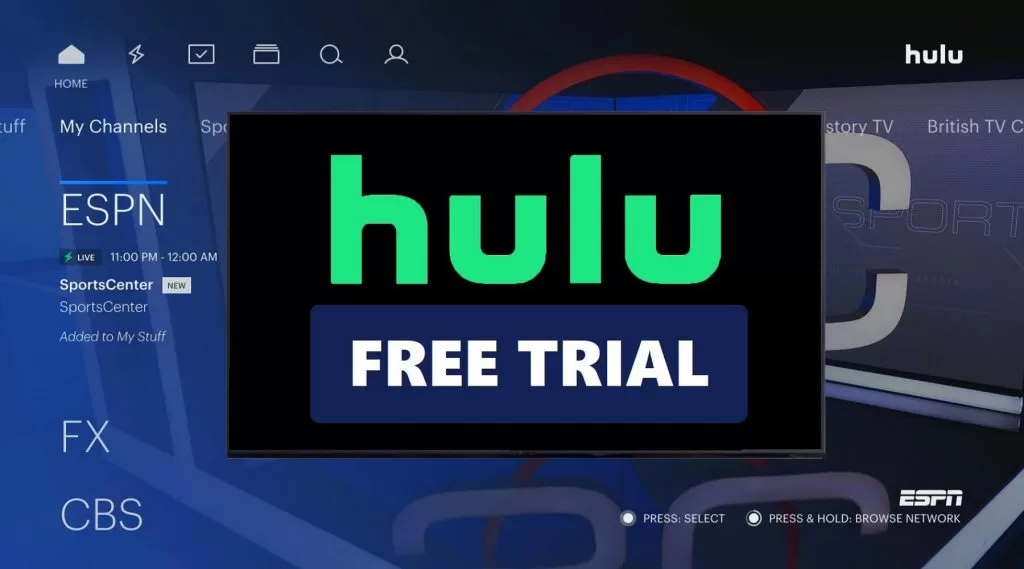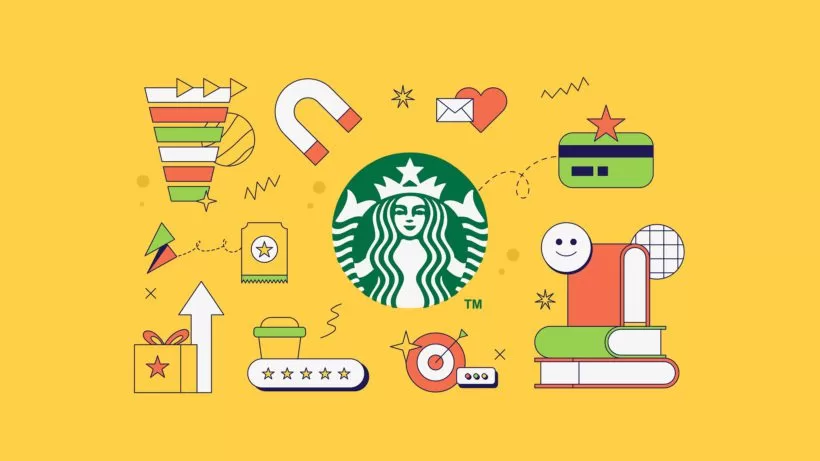When the markets start churning and revenue spirals downward, the knee-jerk reaction of financial executives is usually to cut costs. Every expense becomes suspect, including company marketing budgets. What strategies can a company use in an economic downturn to make the most of its budget without losing ground?
These executives face a dilemma: “Should we cut our marketing expenses until we return to solid footing?” Organizational leaders have a reasonable goal when they cut advertising budgets: protecting the company from dire financial straits.
However, this is the wrong step to take. Instead of rashly cutting advertising budgets in a downturn, leaders must focus on revamping their marketing strategies.
Advertising during a recession looks decidedly different than during healthy economic periods. There must be a laser focus on cost and ROI. Organizations should readily discard activities that don’t deliver value in favor of more cost-effective techniques.
However, taking a holistic look at your marketing plan is critical before taking the proverbial pen to your budget. Make sure that you understand how each activity fits into your comprehensive strategy before deciding on cuts. You should also consider how eliminating the activity will impact both short- and long-term revenue.
What strategies can a company use in an economic downturn? Start by identifying frivolous marketing expenses and exploring less-costly alternatives to replace them with.
Begin with a Comprehensive Analysis of Your Marketing Plan
Most companies have a thorough and detailed marketing plan they rely on for all of their advertising activities. Start by examining your plan to determine where you can pare down expensive campaigns that aren’t delivering results. Look for the following signs of ineffective marketing.
Low ROI
Low ROI is a critical indicator that you need to hit the pause button on a marketing strategy. If you’re spending thousands of dollars on an activity that doesn’t result in measurable sales or leads, there are few reasons to keep throwing your dollars down the drain.
Prime examples of low ROI marketing activities include print advertising and traditional commercial advertising. Both methods provide little control over your target audience and can require a significant financial outlay.
Creating a professional TV commercial for local or national broadcasting stations can cost hundreds of thousands of dollars, and few metrics allow you to measure its results.
Similarly, print advertising, including ads in newspapers, magazines, or billboards, is quickly forgotten and often poorly targeted.
Most companies use low-ROI marketing techniques for their top-of-the-funnel activities, such as generating brand awareness. While brand awareness is critical to attracting future customers, you can turn to other, less expensive options.
Poor Quality Leads
In an ideal scenario, your top marketing strategies will bring in qualified leads ready to make a purchase from your company. These leads fit your targeted audience and possess the desirable traits that turn casual shoppers into dedicated clients.
However, obtaining quality leads isn’t always straightforward, and inefficient marketing strategies can result in poor leads that cause your sales team frustration and headaches, eating into time better spent connecting with quality customers.
If you notice that a few of your marketing strategies result in questionable prospects who turn tail quickly, consider eliminating them from your processes. There are other methods that can help you optimize your marketing budget.
Low Conversion Rates
Not every contact with a customer will result in a sale. Some customers browse your offerings only to close their pocketbooks when it comes time to buy.
Others will benchmark your company against competitors, looking for the most cost-effective option: Everybody feels the pain in a recession, and customers are also trying to make the most of their money.
However, if you notice that a strategy you’re spending a lot of money on isn’t resulting in sales, such as cost-per-click (CPC) advertising, it’s time to fine-tune your efforts. Cut back on activities that don’t result in desired conversions and shift your budget to those that do.
Identify What You Can Afford to Spend
Your marketing budget is the key to deciding what strategies you can implement. Marketing strategies will look significantly different between highly competitive companies with million-dollar budgets and companies operating on shoestring budgets.
Start by looking at your current financial statements over the past few months. Do you see a decline in revenue, or are you preparing for an event that may or may not come to pass? Does your organization have healthy reserves, or are you wondering whether you can meet next month’s payroll?
If your financial situation is healthy, you shouldn’t make large cuts to your marketing budget. Doing so can hurt your organization in the long run, as you may struggle to attract new clients and maintain brand awareness.
Companies on tighter budgets will need to cut excess marketing, but they should try implementing more cost-effective strategies that tap into their existing customer base.
Innovative Marketing Strategies for a Recession
Once you know what you can afford to spend, it’s time to get started. What strategies can a company use in an economic downturn to retain and grow its customer base? Here are a few to consider.
Experiential Marketing
Experiential marketing involves immersing your customers in an experience with your company’s products or services. This type of marketing can occur both on- and offline.
Suppose that you own a local dessert company. You could offer small free samples of your best-selling cakes or pastries. That’s a great example of offline experiential marketing.
Online experiential marketing is appropriate for companies that sell products or services through their websites or other forums. For instance, an English-language tutoring company might offer a free week of classes to interested clients. The customers can try the service to determine whether it is a good fit for them.
Experiential marketing allows customers to learn more about your products and services for a relatively low cost. Of course, your experiential marketing budget will depend on the type of experience you provide.
For instance, offering consumers a free one-day cruise with a $500 value will be exponentially more expensive than a 10-minute tour of your ship.
Experiential marketing offers several key benefits that are difficult to replicate through other marketing strategies. First, it improves conversions. People are more likely to purchase from you after they experience how your products or services benefit them. A free sample could be all that stands between you and a sale.
Second, experiential marketing can improve demand for your products and services. When given a choice between your company, which allows customers to test its products, and your competition, which doesn’t, prospective clients are likelier to choose you.
Finally, experiential marketing creates a relationship with your customers. Even if they decide not to make an immediate purchase, they’ll remember your company when a future need arises. They may also share their experience with friends, increasing brand awareness and demand for your products.
Successful Experiential Marketing in Practice
Many companies use experiential marketing to their advantage.
For example, Amazon offers a 30-day free trial for new Prime subscribers. Those who enroll in the trial receive free two-day shipping and access to Prime Video and Amazon Music. This free trial allows consumers to determine whether Prime is a worthwhile expense.

Similarly, most streaming companies, like Hulu, offer free trials for new customers. Hulu offers a free one-month plan to subscribers who enroll for the first time or who return to the service after a specific period. Those who like the service can then choose a less-expensive subscription with ads or the no-ads version.
You’ll likely find examples of experiential marketing around your city. Restaurants often offer complimentary appetizers to customers on certain weekdays, and museums usually have special days where they allow all visitors free entrance.
If you’re not already on the experiential marketing bandwagon, see where you can fit it into your organization.
Influencer Marketing
Influencer marketing is a relatively inexpensive approach that allows you to reach customers in your intended audience without having to build up your own significant social media following.
Ideally, you’ll form a partnership with a social media influencer whose audience mirrors the buyer persona of your typical customer. In exchange for a fee, the influencer will promote your products or services to their followers.
Influencer marketing is similar to working with a celebrity who has a significant fan base. Large corporations often hire celebrities to market their products. For instance, Jennifer Aniston was a longtime promoter of Smartwater, and the “Got Milk?” campaign featured collaborations with over 100 celebrities over several decades.
While celebrity partnerships certainly still exist, companies with smaller advertising budgets can get in on the action with everyday influencers.
A typical everyday influencer has established a fairly large follower base by posting photos and videos that attract people interested in certain topics, like cars, makeup, or sports. Marketers should notice when an everyday influencer grows a fan base — especially when their audiences have similar characteristics and demographics.
Working with influencers gets your product in front of the audience you’re seeking for a lower cost than hiring a celebrity or creating a television commercial.
You can find influencers through social media sites like Instagram, TikTok, and YouTube. All three platforms offer specialized search tools that allow you to search for influencers based on specific criteria, such as the number of followers they have. You can also perform manual searches for influencers using keywords or hashtags.
Before choosing to partner with an influencer, you’ll want to consider a few factors, such as their content, audience demographics, and prior performance metrics.
The content the influencer shares should relate to your products and services. For instance, if you want to show off your company’s newest food processor, working with an influencer who posts recipes and cooking videos is a great idea.
You’ll want to carefully examine the demographics of the influencer’s followers. The more their demo overlaps with your target audience, the better. Consider their followers’ location, age, and gender. For example, if you want to showcase a new restaurant you opened in San Francisco, choosing an influencer whose audience mainly lives in northern California is ideal.
Finally, you’ll want to examine the influencer’s past performance metrics. Look at the level of engagement their posts receive. Posts with many comments, shares, and likes indicate highly engaged followers.
While you will likely see an uptick in interest in your products following your first post with an influencer, you shouldn’t look at influencer marketing as a one-time deal. You’ll see more significant results when your partnership is ongoing, which means that you will pay the influencer to post about your products or services regularly.
Consider working with several different influencers if you have a broader target audience. Each influencer should have specific audiences that don’t substantially overlap.
Noteworthy Examples of Influencer Marketing
Influencer marketing sounds like a winning strategy, but does it deliver results? Multiple companies say yes, it does. Let’s look at a few examples.

Glossier is a beauty startup based in New York City. In 2017, Glossier’s limited advertising budget precluded it from hiring major influencers to promote its products, so it turned to a network of micro-influencers with small but loyal followings to get the word out about its skin care and cosmetic products.
These efforts were immensely successful. Today, the company has 10 stores in multiple cities, including Los Angeles and London, and all Sephora stores carry its products. Glossier’s small investment in lesser-known influencers led to big returns.
Another startup, HelloFresh, owes much success to working with influencers. The meal delivery service, which offers kits that allow subscribers to cook easy healthy meals, made significant investments in influencer marketing. It chose a wide range of people, from celebrities to food-conscious bloggers, to share the benefits of its subscriptions.
The HelloFresh strategy paid off; today, the company boasts millions of subscribers. It continues to use Instagram to promote its products with a dedicated hashtag, #HelloFreshPics.
Omnichannel Marketing
Omnichannel marketing involves interacting with customers via multiple channels, such as social media, email, text messages, and physical storefronts. Modern platforms allow you to record each client interaction with your organization, ensuring that communication via separate channels is cohesive and relevant to the consumer.
For example, if a client visits your website and picks a few items to buy, you’ll retain their shopping cart. If the client doesn’t finalize the purchase, you can send an email notifying them of the abandoned shopping cart, along with an additional incentive to make the purchase, like a one-time discount. You can also share ads for the products they’re interested in via social media.
The goal of omnichannel marketing is to improve the quality of customer interactions when clients move between different touchpoints. You’ll retain first-party data from every interaction, providing a more authentic, unified experience than traditional multichannel marketing strategies.
Omnichannel marketing has a few benefits, including improving the customer experience, boosting sales, and providing better insights into consumer buying behavior. As you learn more about your customers, you can refine your marketing techniques to suit their needs better.
Implementing an omnichannel marketing strategy isn’t difficult, but it will require some resources. You’ll need to decide on the appropriate channels to include in your strategy and the right technology to track customer interactions.
For instance, if you operate an e-commerce store, you might use email, SMS texts, your website, and Instagram to showcase your products and communicate with customers. You’ll want to integrate each channel, automating certain interactions that encourage customer engagement.
You can use various resources in your strategies, such as customer data and omnichannel marketing platforms. Customer data platforms track your first-party data across different channels, and omnichannel marketing platforms handle automated features like push notifications and email messaging. While both systems require some investment, the returns make it worthwhile.
Omnichannel Marketing in Action
One example of a company with an impressive omnichannel marketing strategy is Amazon. Amazon customers can visit the company’s website or log on to its apps to purchase products or use features like Prime Video and Amazon Music.
The company records each customer interaction, providing recommendations based on search history, previous purchases, and viewing habits.
Customers of Amazon receive regular emails alerting them to new sales or products relevant to their interests and shopping habits. Notifications of abandoned shopping carts, along with retargeting ads in the client’s social media feed and other online platforms, are standard.

Another organization that has seen success with omnichannel marketing is Starbucks. The specialty coffee store offers a mobile app that clients can use to pay for their drinks and earn loyalty points.
Refilling the balance of the loyalty card through the app is nearly instantaneous, and the company obtains valuable data to personalize the customer experience and enhance sales.
SEO/Content Marketing
SEO marketing involves optimizing online content, including articles, videos, whitepapers, and blogs, to enhance your company’s rankings in search engines for specific keywords. Higher rankings lead to more organic traffic to your website and physical storefronts, which can increase sales.
SEO and content marketing don’t provide the instantaneous results that some other strategies offer, but they are vital for building authority and credibility in crowded markets. They’re also relatively inexpensive. Startup companies can start their SEO efforts with minimal investment, aside from time.
To begin an SEO/content marketing strategy, develop a list of topics relevant to your company. These topics should answer questions your customers are likely to have. Each should include a list of keywords to target and include comprehensive and relevant information.
Ideally, you’ll publish content to your website several times weekly. Over time, search engines will begin to see you as an authority in your market and move you up in rankings.
However, regularly publishing content is just one factor in the strategy. You should also share your content through social media and your email subscriber list to improve customer engagement.
You’ll also want to build backlinks to your content from other websites. Backlinks enhance your domain authority, increasing the likelihood of ranking highly on search engines.
Adhering to an ongoing content schedule becomes harder once your business takes off. You can hire an in-house team to create content regularly or outsource the job to professionals who specialize in written or video content. While both methods can be costly — especially when advertising during a recession — they sustain long-term growth.
SEO/Content Marketing in Practice

One example of successful SEO/content marketing is the Nomadic Matt blog. Founded by Matthew Kepnes in 2008, the blog provides helpful travel advice and tips to people interested in worldwide budget travel.
Over the years, Kepnes and his team have created thousands of articles that answer every question a traveler might have, sorted by type of travel and destination.
Aside from the blog, Nomadic Matt offers several destination guidebooks and a memoir of Kepnes’s decade traveling the world. Kepnes regularly shares new content with followers through Facebook, Twitter, Pinterest, and email.
Embrace Marketing During a Recession
During an economic downturn, the initial reaction of many company leaders is to cut the marketing budget.
However, marketing is the primary way potential customers learn about your products and services. When you stop advertising during a recession, fewer clients will know what you have to offer, which can hurt your efforts to build and retain your customer base.
Instead of making drastic, across-the-board cuts to your marketing budget, determine which strategies have the highest ROIs and lead to conversions. Reallocate your budget to focus on those efforts rather than spending money on techniques that don’t deliver results.
What strategies can a company use in an economic downturn to improve revenue and increase brand awareness? Look for methods that align with your budget and reach your targeted audience.
Don’t be afraid to try new techniques with proven results. For instance, if you’ve never worked with an influencer before, research how a partnership could benefit your organization. You don’t have to work with the most expensive influencers; instead, look for individuals with modest and loyal followings that align with your target customers.
You’ll also want to lean into your existing customer base rather than continually trying to attract new customers. Existing clients are already familiar with your company and are usually easier to convert. With the proper marketing strategy, your organization can survive — and even thrive — during a recession.

